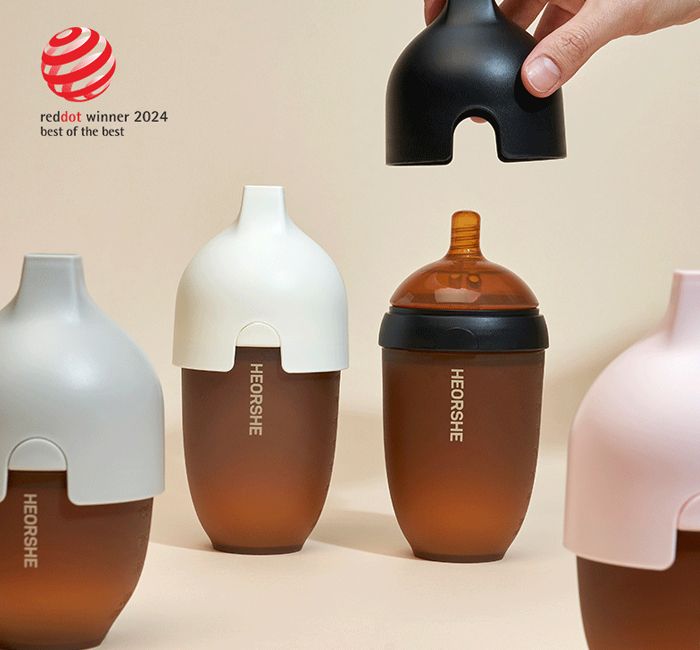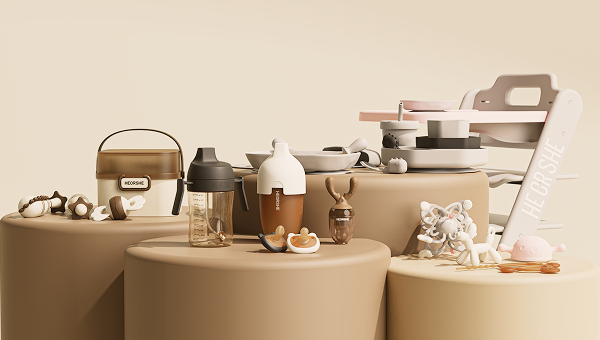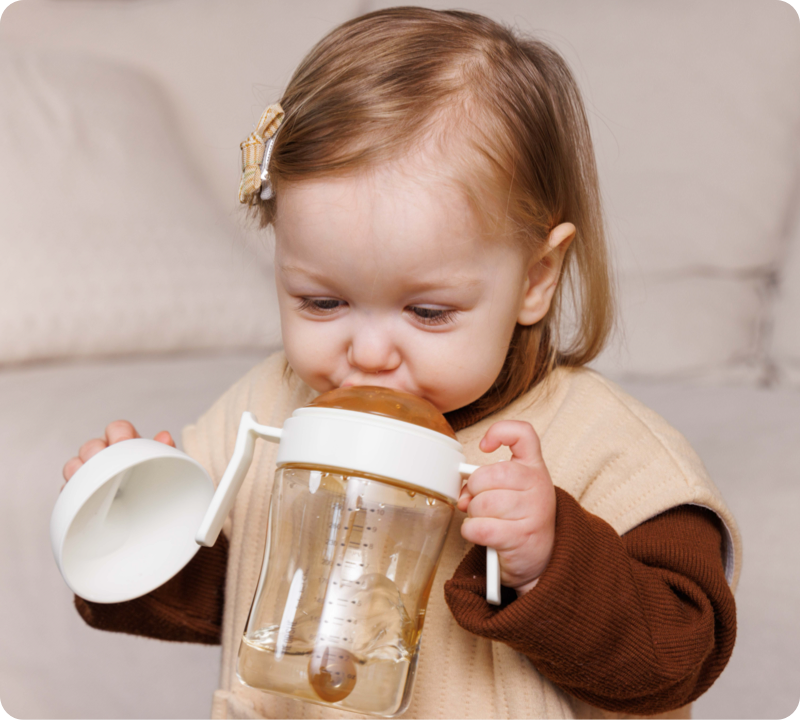How to pick a Baby Bottle for Your Baby?
Selecting the perfect bottle for your newborn can feel overwhelming, especially with the wide range of options available in today’s market. Whether you’re a first-time parent navigating the complexities of baby care or a seasoned caregiver looking to update your knowledge, choosing the right bottle is essential for your baby’s comfort, health, and feeding experience. This comprehensive guide will take you step by step through the process of selecting the best newborn bottle, covering everything from the different types available, such as glass, plastic, and silicone, to the key features you should consider, including nipple flow, bottle shape, and ease of cleaning. By the end of this guide, you'll be equipped with the knowledge and confidence needed to make an informed decision that ensures your little one’s feeding time is as smooth and comfortable as possible, giving both you and your baby peace of mind.
Why Selecting a Newborn Bottle for Your Baby Can Be Challenging
Selecting the right bottle for your newborn is a task that requires careful consideration, as it can greatly influence your baby’s feeding experience and overall well-being. Newborn bottles are specifically designed to meet the delicate needs of infants, particularly during the first few months of life when their feeding habits and digestive systems are still developing. Understanding the nuances of these bottles is crucial to making an informed decision that promotes your baby’s health and comfort.
1. Why Newborn Bottles Matter
Newborns have unique feeding requirements that differ significantly from those of older babies. Their tiny mouths are still developing, and their sucking reflex is often less coordinated, which means that the right bottle can make a big difference in feeding success. A well-designed newborn bottle can help prevent common feeding issues such as colic, gas, and reflux by ensuring a smooth flow of milk or formula that matches your baby’s feeding pace. Additionally, the correct bottle can support proper latch-on techniques, which are essential for both bottle-fed and breastfed babies. The comfort and efficiency of feeding directly impact your baby’s growth, development, and overall contentment, making the selection of the right bottle a crucial step in your parenting journey.
2. Parts of a Newborn Bottle
A typical newborn bottle is composed of several key parts, each playing a specific role in the feeding process:
- Nipple: The nipple is the part of the bottle from which the baby sucks, and it comes in various shapes, sizes, and flow rates to cater to different feeding needs. Some nipples are designed to mimic the breast, making them ideal for breastfed babies transitioning to bottle feeding. The flow rate of the nipple—ranging from slow to fast—should match your baby’s feeding ability to avoid choking or frustration.
- Bottle Body: This is the main container that holds the milk or formula. Bottle bodies are made from different materials, including plastic, glass, and silicone, each with its own set of advantages and considerations. For example, glass bottles are durable and free from harmful chemicals, while plastic bottles are lightweight and shatterproof.
- Collar: The collar is the ring that secures the nipple to the bottle body. A well-designed collar should ensure a tight fit to prevent leaks while also being easy to assemble and disassemble for cleaning.
- Cap: The cap protects the nipple from contamination when the bottle is not in use. A secure cap is essential for maintaining hygiene, especially when you’re on the go.
Types of Newborn Bottles for Your Baby
There are various types of newborn bottles, each designed to meet specific feeding needs. Here's a breakdown of the most common types:
Standard Bottles
Standard bottles are the most basic and widely used type. They are typically cylindrical and come in various sizes. These bottles are versatile and work well for most babies.
Anti-Colic Bottles
Anti-colic bottles are designed to reduce the amount of air a baby swallows during feeding, which can help prevent colic, gas, and reflux. These bottles often have a venting system to minimize air bubbles.
Wide-Neck Bottles
Wide-neck bottles have a broader opening, which mimics the natural shape of a mother’s breast. They are easier to clean and fill, and many babies find them more comfortable, especially when transitioning from breastfeeding to bottle-feeding.
Angle-Neck Bottles
These bottles have a bent neck, which helps keep the nipple full of milk and reduces the amount of air the baby ingests. This design is particularly helpful for babies who suffer from reflux.
Disposable Liner Bottles
Disposable liner bottles use a collapsible liner that contracts as the baby drinks, preventing air from mixing with the milk. This type of bottle is convenient for on-the-go parents as it reduces the need for cleaning.
Choosing the Right Nipple for Newborn Bottles
The nipple is one of the most important parts of a newborn bottle. Choosing the right one can make a big difference in your baby’s feeding experience.
Nipple Flow Rates
Nipples come in different flow rates, which determine how quickly milk flows out. Newborns typically need a slow-flow nipple to prevent choking and overfeeding. As your baby grows, you can gradually move to faster flow rates.
Nipple Materials
Nipples are usually made from silicone or latex:
- Silicone: Durable, transparent, and tasteless. They are a popular choice for their longevity and safety.
- Latex: Softer and more flexible, which some babies prefer, but they tend to wear out faster and may cause allergic reactions in some infants.
Nipple Shapes
Nipple shapes vary to mimic the mother’s breast or to suit different feeding styles. Some common shapes include:
- Standard: Traditional shape that fits most bottles.
- Orthodontic: Designed to support proper oral development.
- Breast-like: Wider base that resembles the breast, ideal for breastfed babies transitioning to bottles.
Key Features to Consider When Choosing Baby Bottles
When shopping for baby bottles, consider these essential features to ensure you make the best choice for your baby.
Material of the Bottle
Baby bottles come in different materials, each with its pros and cons:
- Plastic: Lightweight and shatterproof but may absorb odors and discolor over time. Ensure the bottle is BPA-free for safety.
- Glass: Durable, doesn’t retain odors, and is easy to clean but is heavier and can break.
- Stainless Steel: Extremely durable and chemical-free but can be expensive and isn’t transparent.
- Silicone: Soft and flexible, often used for collapsible bottles, but may not be as durable as plastic or glass.
Ease of Cleaning
Bottles with fewer parts are easier to clean and assemble, which is important for busy parents. Wide-neck bottles are generally easier to clean because they allow better access with a brush. Dishwasher-safe bottles can save time and ensure thorough cleaning.
Size and Volume
Baby bottles are typically smaller, holding between 4 to 6 ounces of liquid. As your baby grows, you might need larger bottles, but for the first few months, smaller bottles are usually sufficient.
Venting Systems
A good venting system can help reduce the amount of air your baby ingests, which in turn minimizes colic and discomfort. Look for bottles with built-in vents or those designed to reduce bubbles.
Compatibility with Breast Pumps
If you plan to pump breast milk, choosing bottles compatible with your breast pump can save time and reduce the need for transferring milk between containers.

Common Challenges and Solutions of Bottle-feeding
Bottle-feeding isn’t always smooth sailing. Here are some common challenges parents face and how to overcome them.
Nipple Confusion
Nipple confusion can occur when a baby switches between breastfeeding and bottle-feeding. To avoid this, wait until breastfeeding is well established before introducing a bottle and choose a nipple that closely resembles the breast.
Refusal to Take a Bottle
Some babies refuse to take a bottle, especially if they’re used to breastfeeding. To overcome this, try offering the bottle when the baby is not too hungry or upset. Experiment with different nipple types and temperatures of milk to find what the baby prefers.
Colic and Gas
Colic and gas can be distressing for both the baby and parents. Using anti-colic bottles with good venting systems can help reduce the amount of air the baby swallows during feeding.
Leaking Bottles
Leaking bottles can be messy and frustrating. Ensure all parts of the bottle are correctly assembled and that the nipple size is appropriate for the baby’s age. Sometimes, replacing the nipple or the bottle itself can solve the issue.
How to Care for Baby Bottles
Proper care and maintenance of baby bottles are essential for ensuring your baby’s health and safety during feeding. Keeping bottles clean and in good condition helps prevent harmful bacteria from growing and ensures that your baby receives a safe and enjoyable feeding experience.
Cleaning and Sterilizing Bottles
After each use, baby bottles should be thoroughly cleaned and sterilized to prevent the growth of bacteria and other harmful pathogens. Here’s a step-by-step guide to cleaning and sterilizing baby bottles:
- Disassemble the Bottle: Start by taking the bottle apart. Remove the nipple, collar, and any other parts, such as anti-colic vents or caps. Disassembling the bottle ensures that each part is cleaned thoroughly, especially in hard-to-reach areas where milk residue can accumulate.
- Clean Each Part Separately: Wash each part of the bottle separately with warm, soapy water. Use a dedicated bottle brush to clean the inside of the bottle, paying close attention to the bottom and sides where milk can stick. Make sure to clean the nipple’s tiny holes and grooves, as they can easily trap milk and bacteria.
- Sterilize the Bottles: Sterilizing is crucial, particularly for newborns, as it eliminates any remaining bacteria.
There are several methods to sterilize baby bottles:
- Boiling: Place the disassembled bottles and parts in a pot of boiling water for at least five minutes.
- Microwave Sterilizer: Use a microwave sterilizer designed for baby bottles, which uses steam to kill bacteria in just a few minutes.
- Sterilizing Solution: Soak the bottles in a special sterilizing solution that is safe for baby products. Follow the manufacturer’s instructions for the correct dilution and soaking time.
- Air-Dry the Bottles: After sterilizing, place the bottles and parts on a clean rack or towel to air-dry completely. Avoid wiping the bottles with a cloth, as this can introduce new bacteria.
When to Replace Bottles and Nipples
Over time, baby bottles and nipples can wear out, becoming less effective or even unsafe. Regular inspection and timely replacement are key to maintaining bottle hygiene:
- Bottles: Inspect the bottles regularly for signs of damage. Replace them if they become cracked, discolored, or show signs of wear. Plastic bottles, in particular, may develop scratches that can harbor bacteria, making them unsafe for continued use.
- Nipples: Nipples should be replaced more frequently than bottles. Over time, they can become sticky, discolored, or develop thinning or cracking, which can affect their performance. Typically, nipples should be replaced every two to three months, or sooner if you notice any signs of wear.
Conclusion
Choosing the right newborn bottles is a critical decision that can significantly impact your baby’s feeding experience and overall well-being. The right bottle can ensure a smooth and comfortable feeding process, while the wrong one may lead to issues such as colic, gas, or difficulty latching. Understanding the different types of bottles, such as glass, plastic, or silicone, and recognizing the importance of selecting the right nipple—whether it's based on flow rate, material, or shape—are key steps in making an informed choice. Additionally, considering features like anti-colic vents, ease of cleaning, and compatibility with breast pumps can help you find the best match for your baby’s unique needs. Remember, every baby is different, so what works for one might not work for another. Don’t hesitate to experiment with different options until you discover the perfect bottle that meets your newborn's feeding preferences and ensures their comfort and health.



